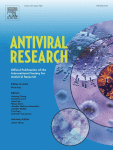View Item
- xmlui.general.dspace_homeCentros e Institutos de InvestigaciónCICVyA. Centro de Investigación en Ciencias Veterinarias y AgronómicasInstituto de BiotecnologíaArtículos científicosxmlui.ArtifactBrowser.ItemViewer.trail
- DSpace Home
- Centros e Institutos de Investigación
- CICVyA. Centro de Investigación en Ciencias Veterinarias y Agronómicas
- Instituto de Biotecnología
- Artículos científicos
- View Item
Baculovirus AcMNPV induces type I interferons and NK/NKT cells-mediated protection against foot-and-mouth disease virus in mice
Abstract
Foot-and-mouth disease is a viral illness that affects cloven-hoofed animals causing serious economic losses. Inactivated vaccines against its causative agent, foot-and-mouth disease virus (FMDV), require approximately seven days to induce protection. Therefore, antiviral strategies are needed to provide earlier protection and to stop the spread of this highly contagious virus during outbreak situations. In this way, our group has previously demonstrated
[ver mas...]
Foot-and-mouth disease is a viral illness that affects cloven-hoofed animals causing serious economic losses. Inactivated vaccines against its causative agent, foot-and-mouth disease virus (FMDV), require approximately seven days to induce protection. Therefore, antiviral strategies are needed to provide earlier protection and to stop the spread of this highly contagious virus during outbreak situations. In this way, our group has previously demonstrated that the baculovirus (BV) Autographa californica multiple nucleopolyhedrovirus (AcMNPV), an insect virus with immunostimulant effects, induces a nonspecific antiviral status that protects C57BL/6 mice against a lethal challenge with FMDV A/Arg/01 at 3 hours or 3 days post inoculation. In this work, we studied the immunological mechanisms involved in this protection. Firstly, we compared the protection elicited by AcMNPV in wild type mice and in knock-out mice lacking the subunit IFNAR1 of the receptor for type I interferons (IFNs). Our results showed that type I IFNs are key to prevent the death of the animals after the FMDV challenge. On the other hand, we evaluated the role of NK and NKT cells by depleting these cell subsets with anti-NK1.1 monoclonal antibody. These cells proved to be necessary for the induction of IFN-γ by AcMNPV and to prevent the onset of a severe disease after the FMDV challenge. We propose BV as a novel tool for the development of antiviral strategies because of the high levels of IFNs induced and the NK/NKT cells-mediated immune response elicited.
[Cerrar]

Fuente
Antiviral Research 180 : 104850 (August 2020)
Date
2020-08
Editorial
Elsevier
ISSN
0166-3542
Documentos Relacionados
Formato
pdf
Tipo de documento
artículo
Proyectos
(ver más)
INTA/PNBIO-1131034/AR./Inmunología molecular y genómica funcional aplicadas a interacciones patógeno hospedador de interés pecuario.
Palabras Claves
Derechos de acceso
Embargado
 Excepto donde se diga explicitamente, este item se publica bajo la siguiente descripción: Creative Commons Attribution-NonCommercial-ShareAlike 2.5 Unported (CC BY-NC-SA 2.5)
Excepto donde se diga explicitamente, este item se publica bajo la siguiente descripción: Creative Commons Attribution-NonCommercial-ShareAlike 2.5 Unported (CC BY-NC-SA 2.5)

